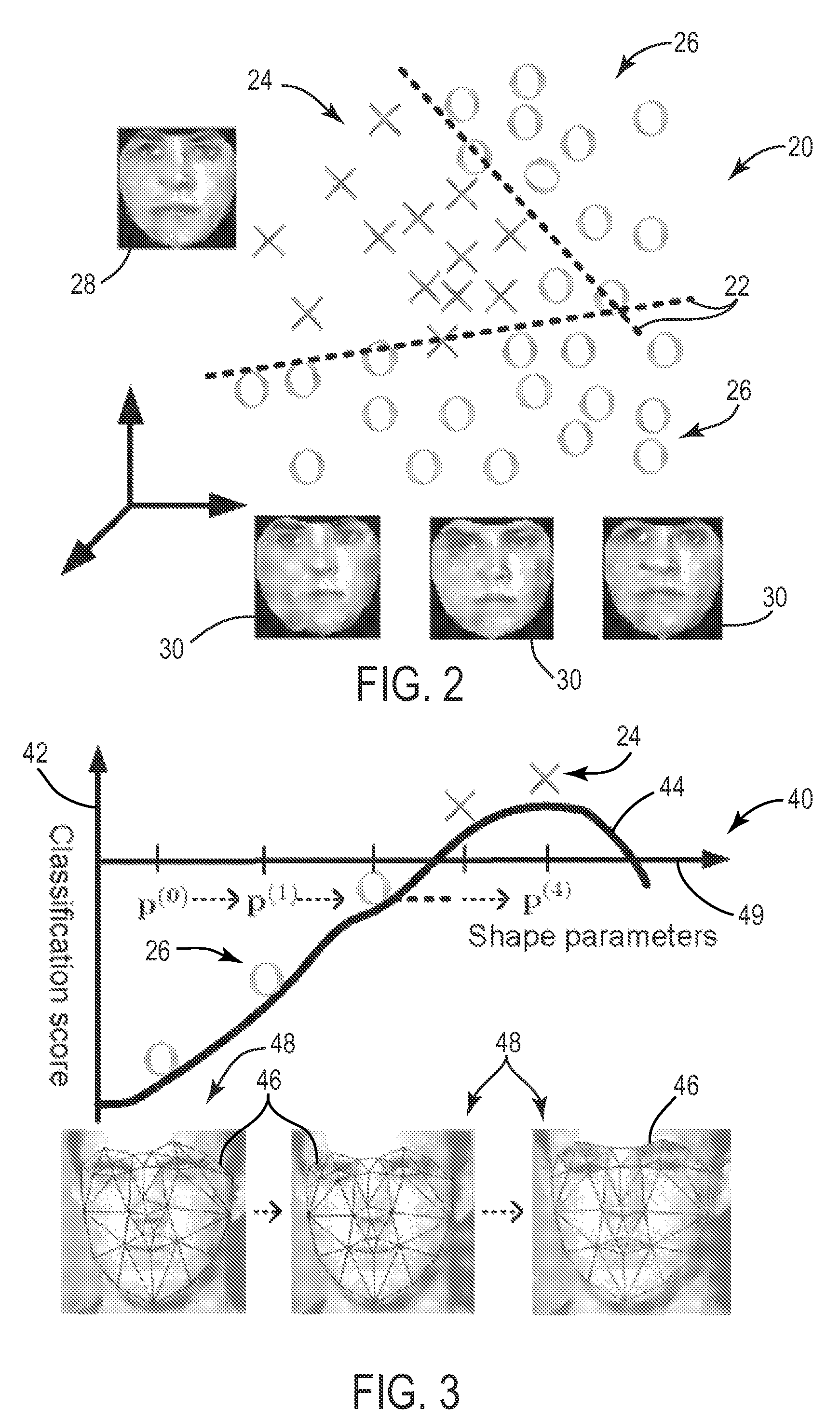Generic face alignment via boosting
a technology of boosting and face alignment, applied in the field of image alignment, can solve the problems of difficult optimization problems, limited representational power of eigenspace, and difficulty in generalizing aam-based face alignment, and achieve the effect of maximizing a strong classifier score and maximizing a strong classifier
- Summary
- Abstract
- Description
- Claims
- Application Information
AI Technical Summary
Benefits of technology
Problems solved by technology
Method used
Image
Examples
Embodiment Construction
[0038]Image alignment is the process of moving and deforming a template to minimize the distance between the template and an image. The elements in image alignment may include template representation, distance metric, and optimization method. Generally, the template may include shape and appearance models. Given an image, landmark points may be located to quantify the shape of the image. In facial image alignment, for example, the shape model may include landmark points which correspond to facial features (e.g., tip of nose, corners of mouth, etc.). An exemplary mean shape 10, as illustrated in FIG. 1, may contain landmark points 12. Thirty-three landmark points 12 are denoted by intersections of two or more elements of the shape 10. The template may also include an appearance model, which employs a two-class classifier to optimize the facial alignment, as described below.
[0039]The present technique generally includes two steps for image alignment. The first step, illustrated in FIG...
PUM
 Login to View More
Login to View More Abstract
Description
Claims
Application Information
 Login to View More
Login to View More - R&D
- Intellectual Property
- Life Sciences
- Materials
- Tech Scout
- Unparalleled Data Quality
- Higher Quality Content
- 60% Fewer Hallucinations
Browse by: Latest US Patents, China's latest patents, Technical Efficacy Thesaurus, Application Domain, Technology Topic, Popular Technical Reports.
© 2025 PatSnap. All rights reserved.Legal|Privacy policy|Modern Slavery Act Transparency Statement|Sitemap|About US| Contact US: help@patsnap.com



